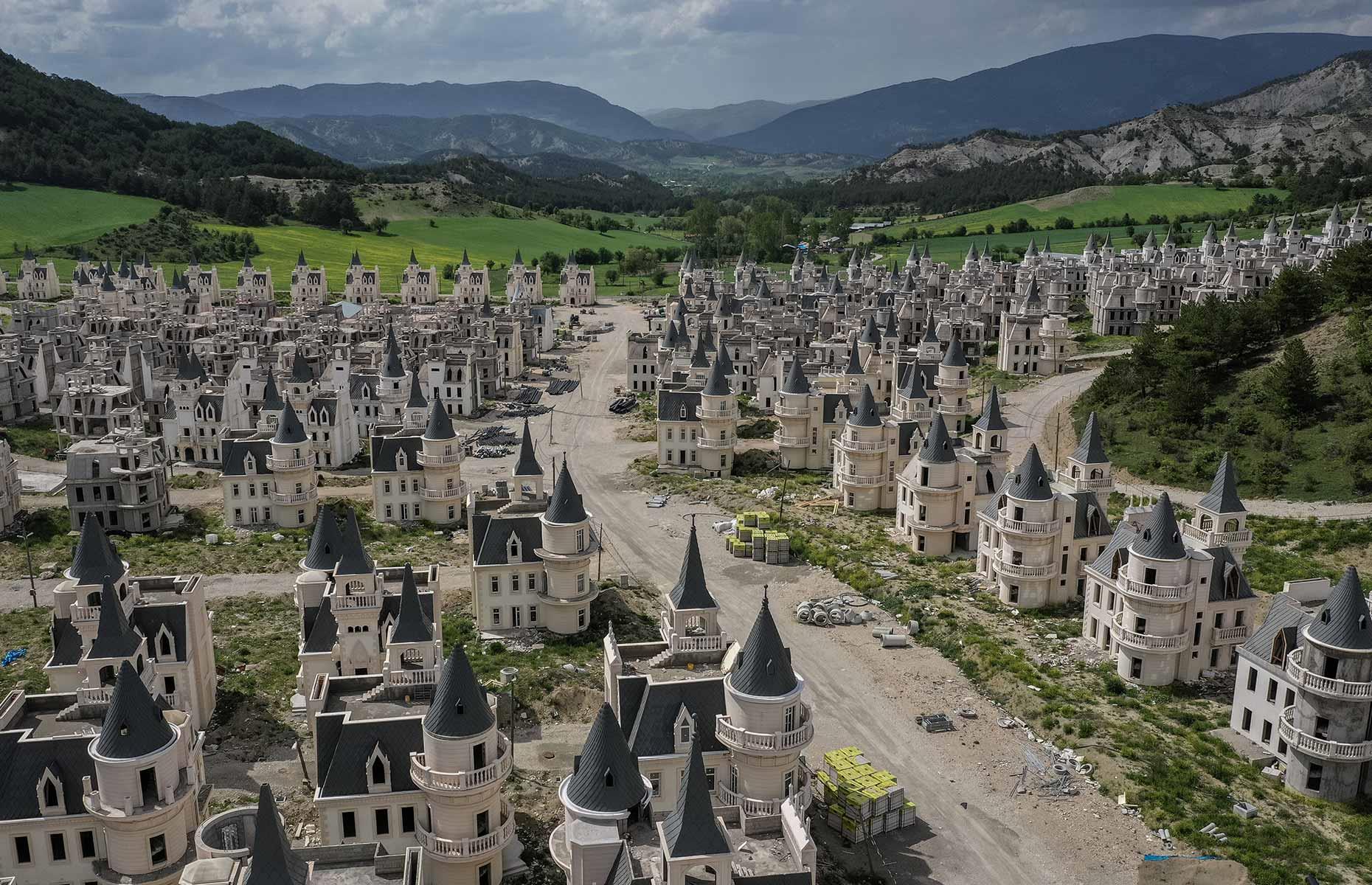
The Burj Al Babas resort, which was meant to be a luxurious European-inspired castle haven with top-notch amenities for wealthy buyers, turned into a nightmare instead. Join us as we explore the eerie abandoned town in Turkey, where enchanting fairytale mansions sit vacant amidst construction debris. Continue scrolling to uncover the bizarre story behind this deserted development.
Taking inspiration from France
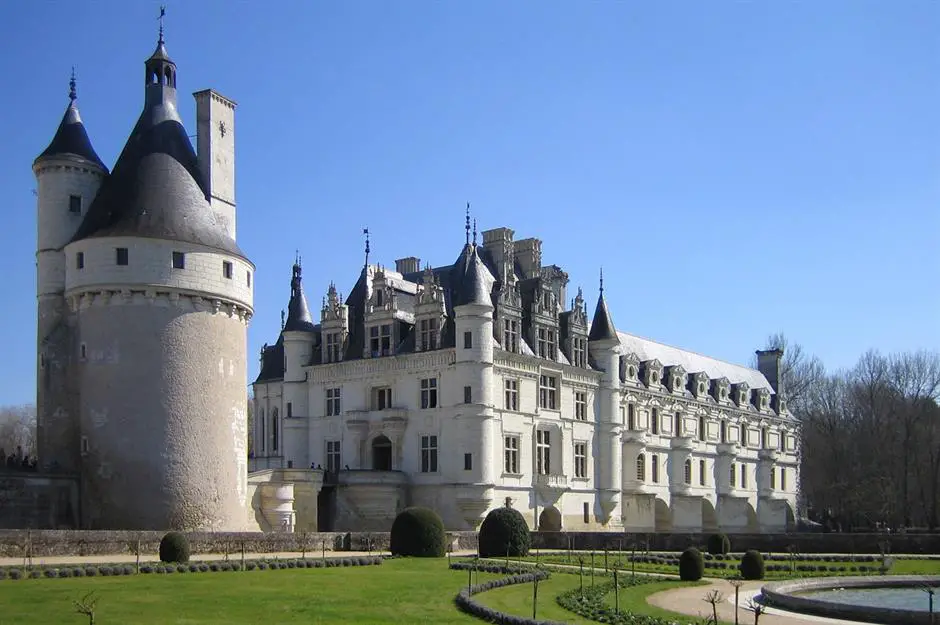
Fueled by a thriving real estate market, the Sarot Group, the project’s developer, envisioned a whimsical and romantic spa resort with 732 villas, drawing inspiration from various sources, including France’s Château de Chenonceau and Istanbul’s Galata Tower. They selected a picturesque 250-acre site near the historic town of Mudurnu in northwestern Turkey and commenced construction on this ambitious $200 million development around 2011.
Appealing to Gulf tourists
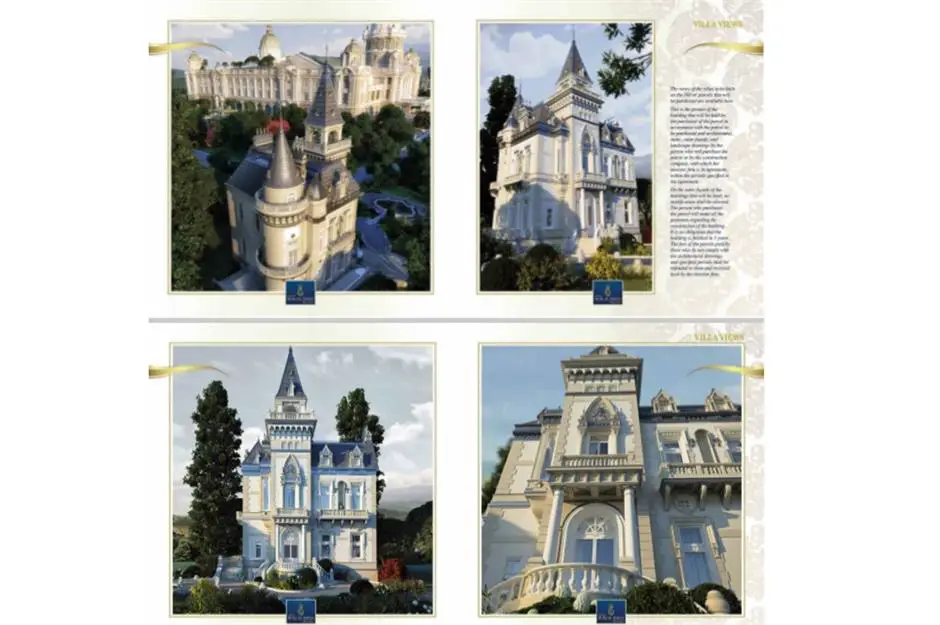
Sarot Group, led by brothers Mezher and Mehmet Yerdelen, along with business partner Bulent Yilmaz, swiftly put together an enticing brochure to attract their target audience: affluent Gulf tourists. They chose an Arabic name for the project: ‘Burj,’ meaning ‘tower’ or ‘turret,’ and ‘Al Babas,’ referring to a renowned spa in the region.
Tourist magnet
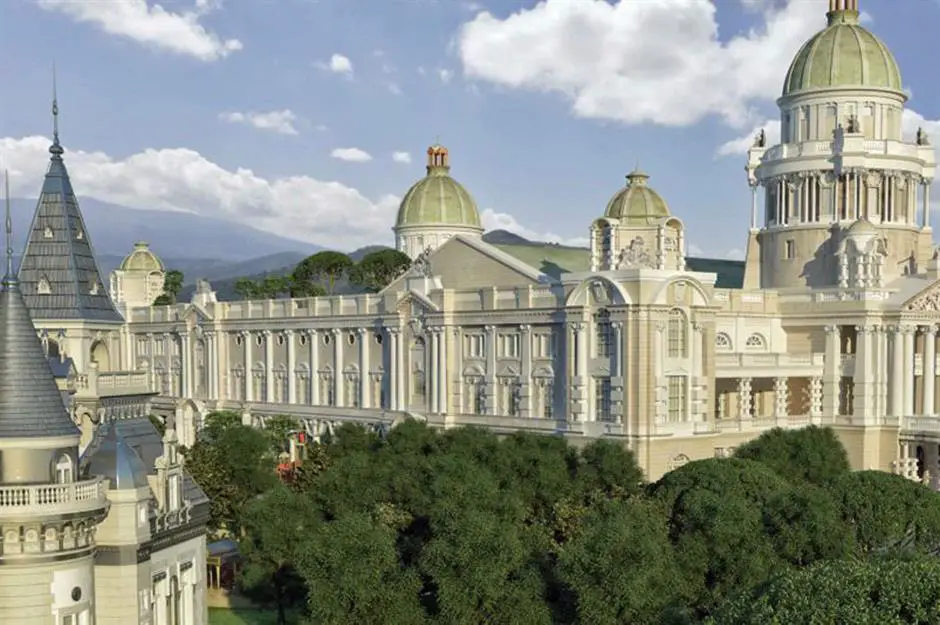
This region of Turkey has long been popular among Gulf visitors due to its pleasant climate, lush landscapes, and serene spa towns. At the heart of the development, a vast leisure complex was planned, featuring architectural elements reminiscent of iconic landmarks such as the US Capitol, St. Peter’s Basilica in Rome, and London’s St. Paul’s Cathedral.
Utilizing thermal springs
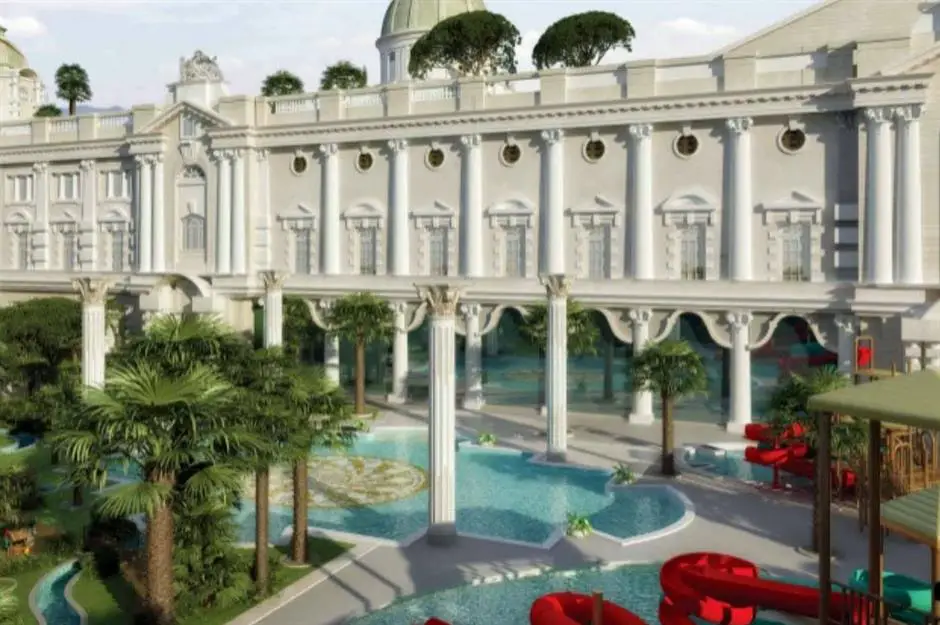
The thermal springs beneath the area are renowned for their restorative qualities, and Sarot Group intended to maximize this resource by incorporating impressive features into the central complex, such as an aqua park with water slides and streams, indoor pools, Turkish baths, saunas, and steam rooms. The thermal waters were also set to be used for heating the complex.
Opulent interiors
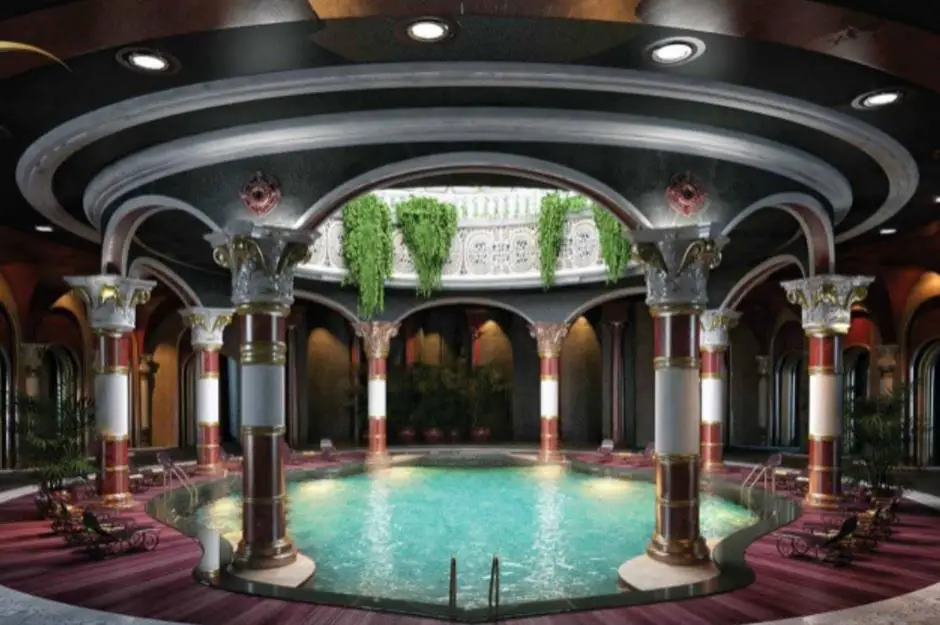
No expense was spared on the interiors of Burj Al Babas. The renderings showed opulent interiors adorned with luxurious marble, in addition to an array of lavish amenities such as boutiques, restaurants, cinemas, children’s play areas, conference halls, fitness and beauty centers, sports courts, and indoor football pitches. Sarot Group planned to provide many of these services free of charge to homeowners, making it an enticing investment.
A fairytale estate
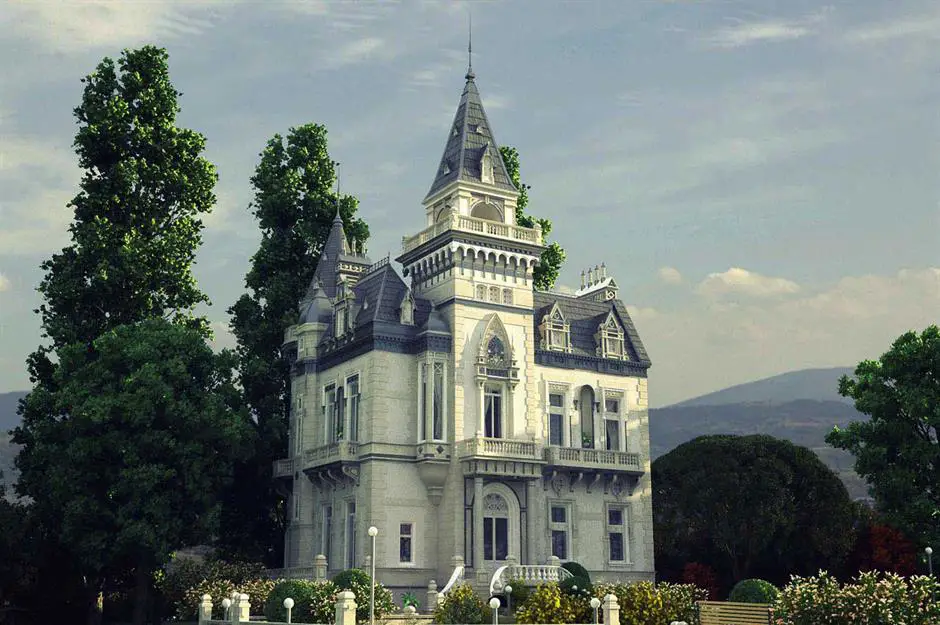
All 732 castles were designed in the same whimsical style, resembling something out of a storybook. The design included Disneyesque turrets, mansard roofs, dormers, balconies with stone balustrades, and abundant decorative elements.
Sumptuous rooms
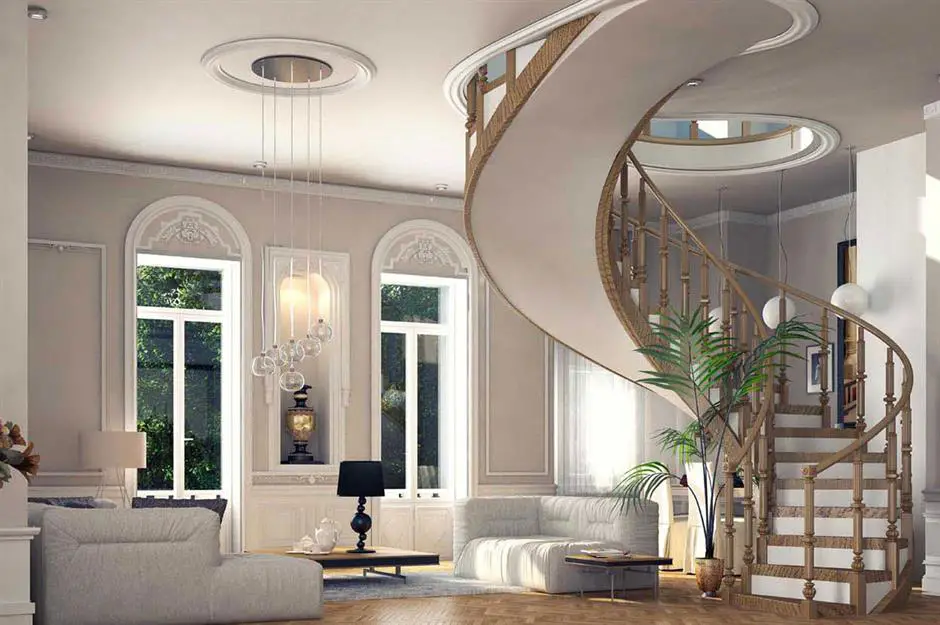
The interior of these fairytale homes promised equally impressive features, including high ceilings, ornate plasterwork, parquet flooring, and a sweeping spiral staircase leading to a stunning rooftop terrace. Each floor was set to have a Jacuzzi with healing spa waters, and buyers had the option of an indoor pool and a lift.
High-end details
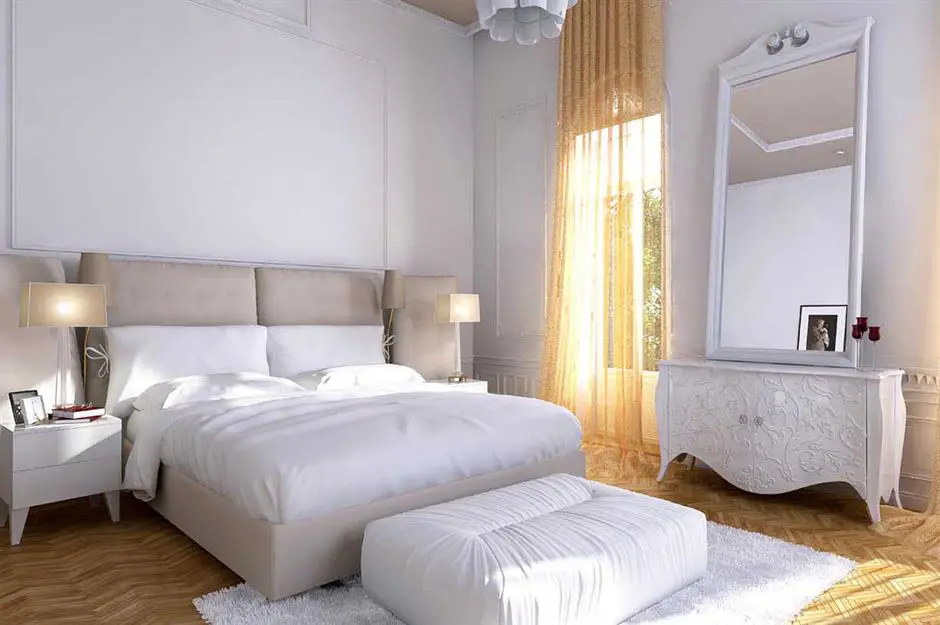
During the early stages of the project, these fairytale castles were selling rapidly, attracting deep-pocketed buyers from Kuwait, the UAE, Qatar, and Saudi Arabia. However, as the Turkish economy faltered and oil prices dropped, sales dwindled. By the summer of 2018, around 587 of the mini châteaux had been built, but only about 350 had been sold.
Financial troubles
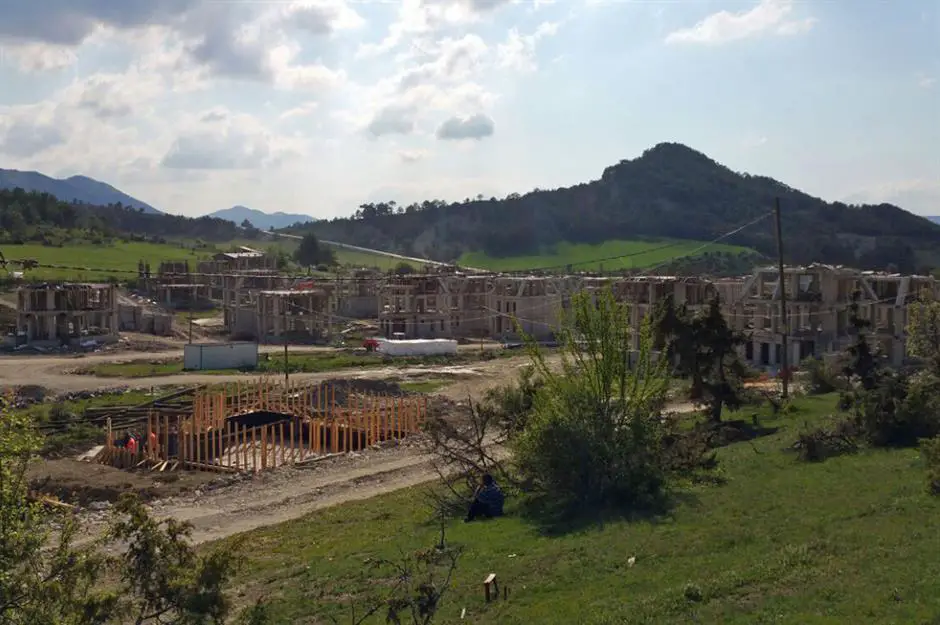
Compounding the financial woes, a significant number of buyers struggled to meet the villa’s costs, leaving Sarot Group mired in debt, amounting to $27 million. To salvage the project, they needed to sell the remaining castles quickly. While show villas, albeit less elaborate than the brochure’s promises, were prepared, they did not lead to brisk business.
Debt crisis
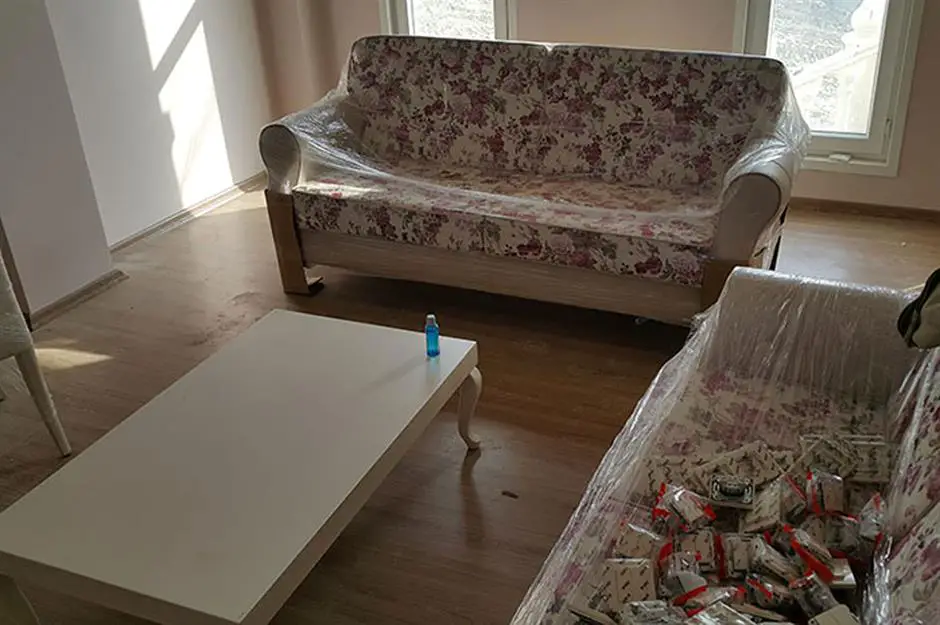
In June 2018, Sarot Group applied for a concordat, an agreement allowing debtors to pay back a portion of what they owe to appease creditors and avoid bankruptcy. The court granted them three months to settle their debts under the agreement, but Sarot Group couldn’t raise the necessary funds, and the deadline passed.
Bankruptcy declared
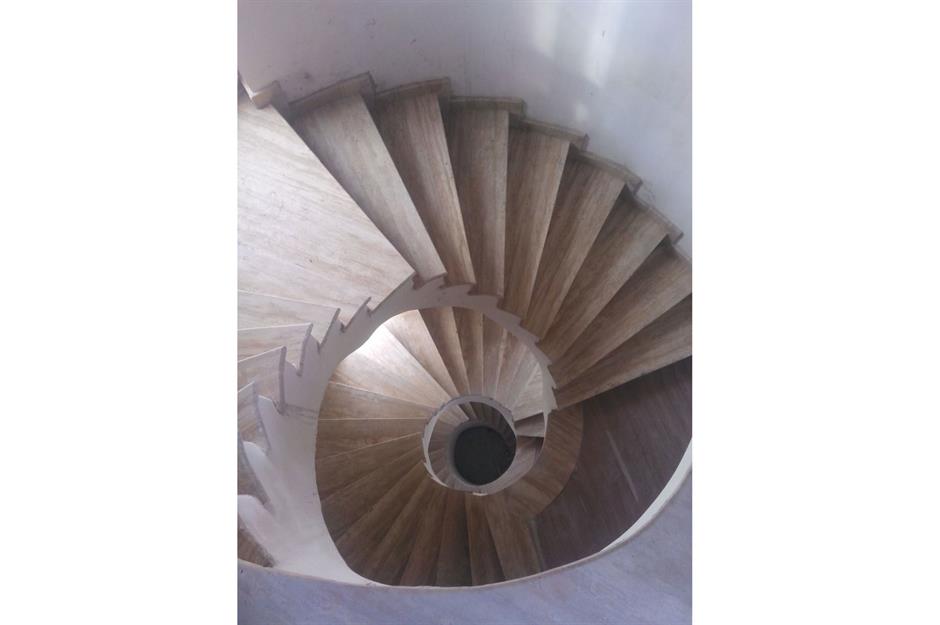
As costs escalated, Sarot Group requested permission to restructure their outstanding debts, but the court refused. In November 2018, the court declared bankruptcy, bringing construction to a halt despite pleas to continue.
Overcoming challenges
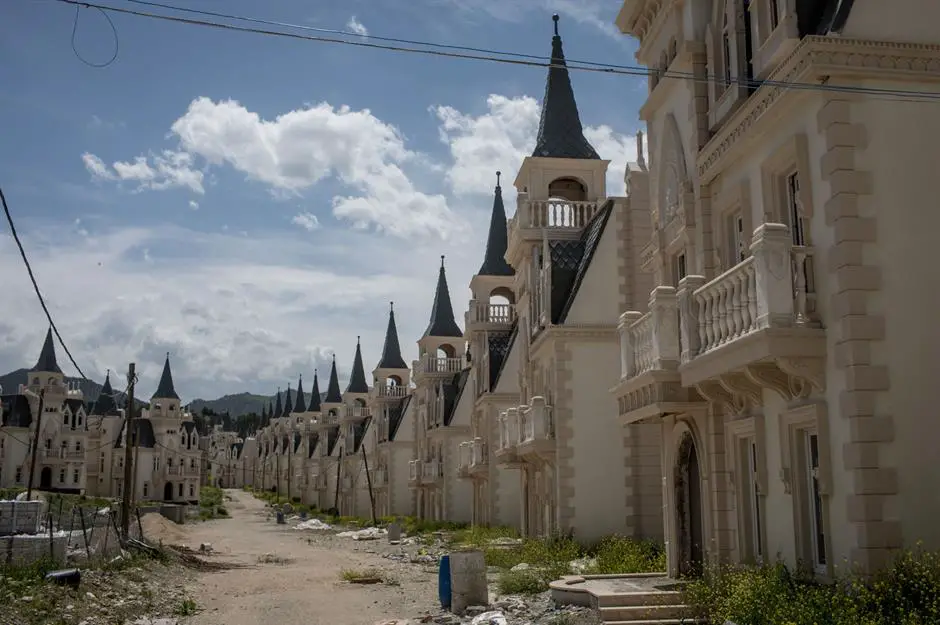
Sarot Group claimed that they only needed to sell an additional 100 villas to clear their debts, valued at $200 million. However, it seems that not much progress has been made since that statement, and the project remains indefinitely on hold.
The uncertain future
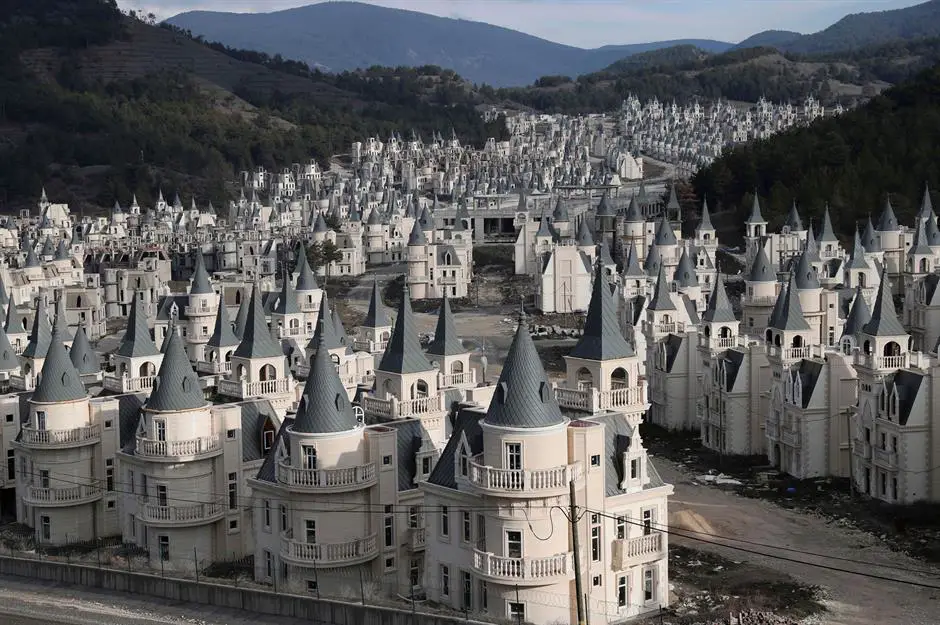
Given the lack of recent activity at the site and the project’s stagnant social media accounts, it’s unclear when, or if, the development will ever be completed. The promise to finish by 2023 made before the pandemic appears unlikely. We can only hope for a positive outcome for Burj Al Babas, but for now, it remains a deserted dream. Sarot Group did not respond to requests for comments on this story.
Source :theabandonedworld.com
